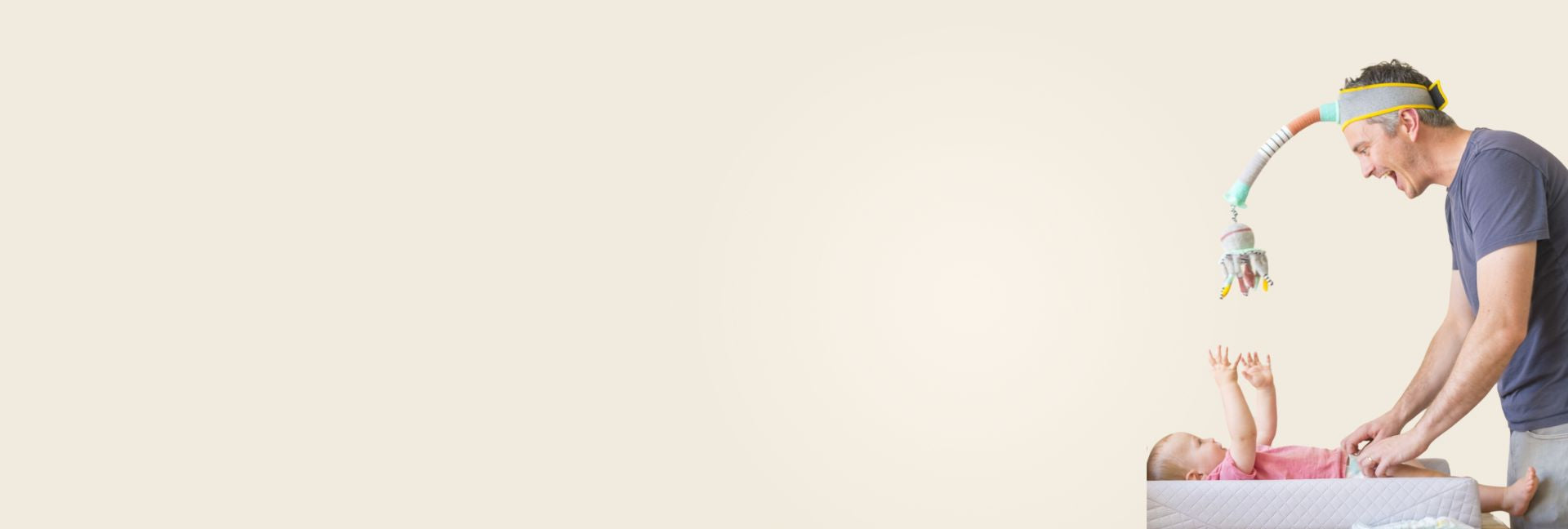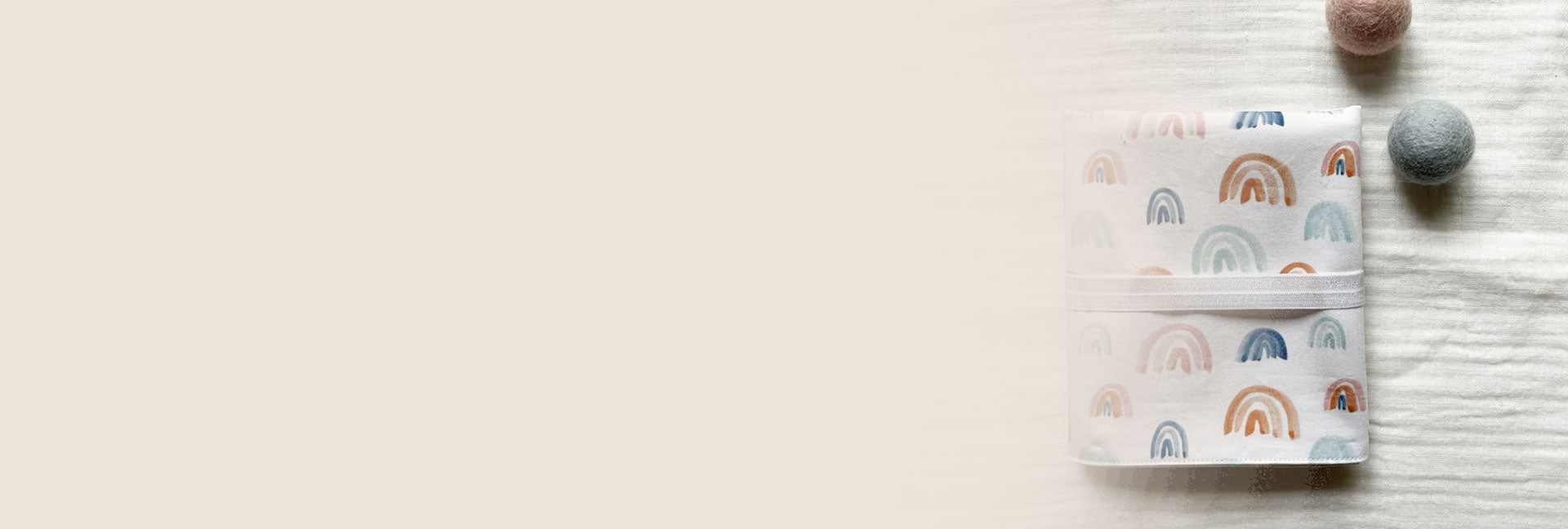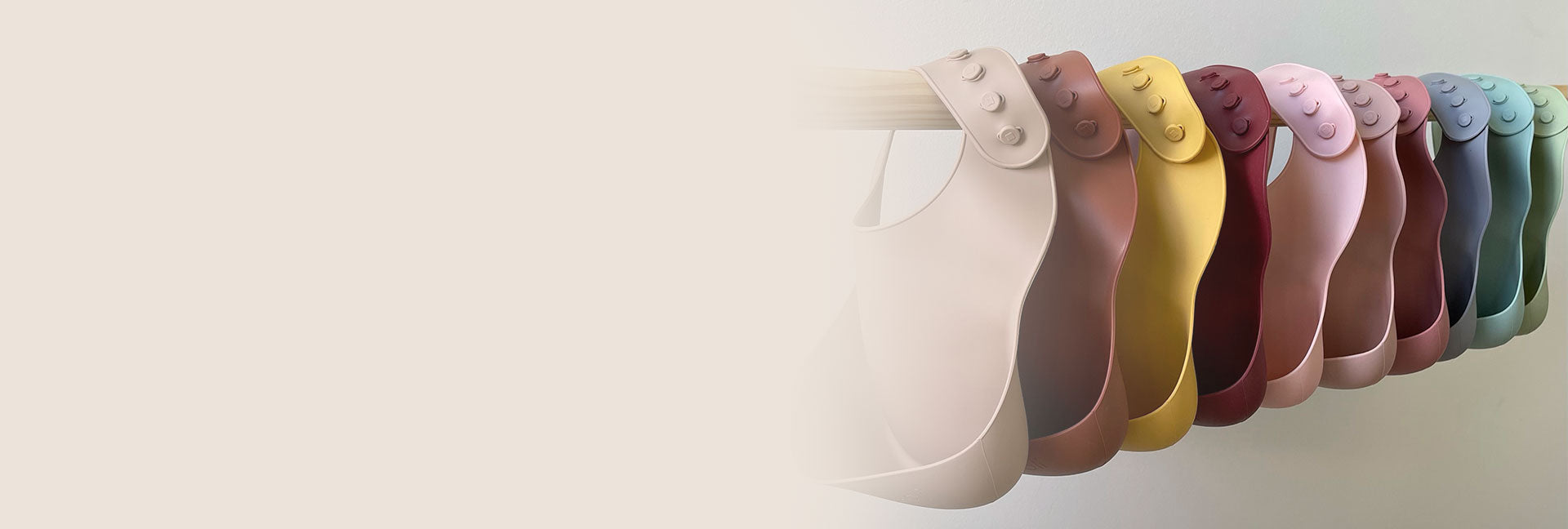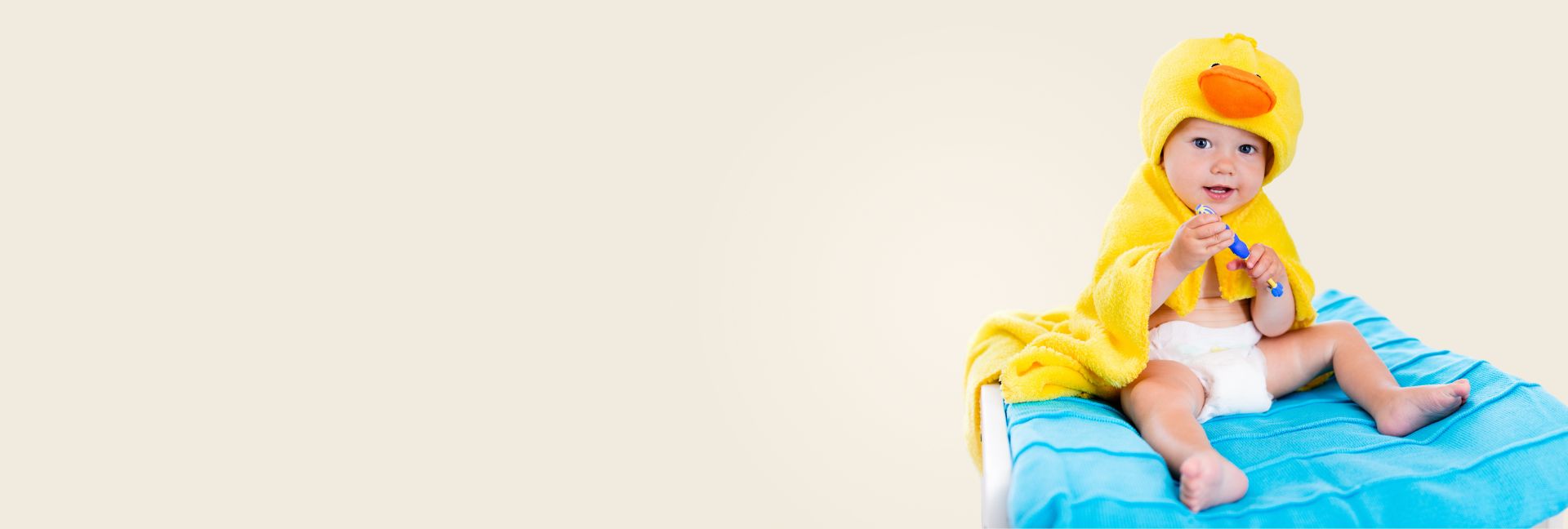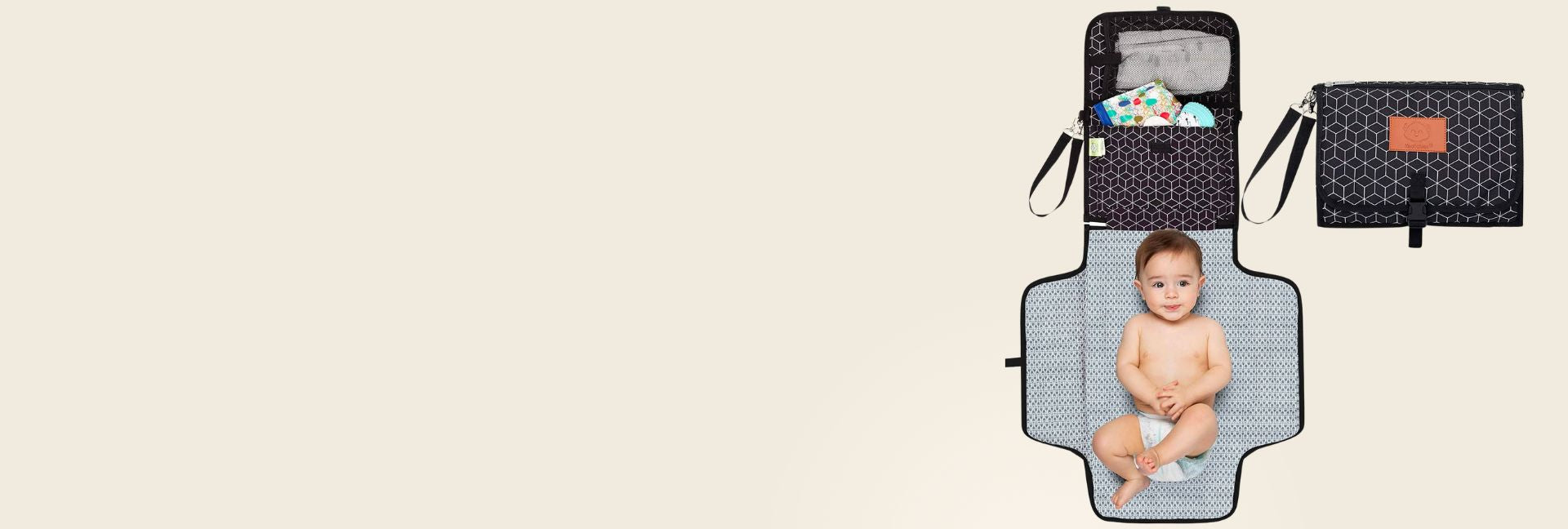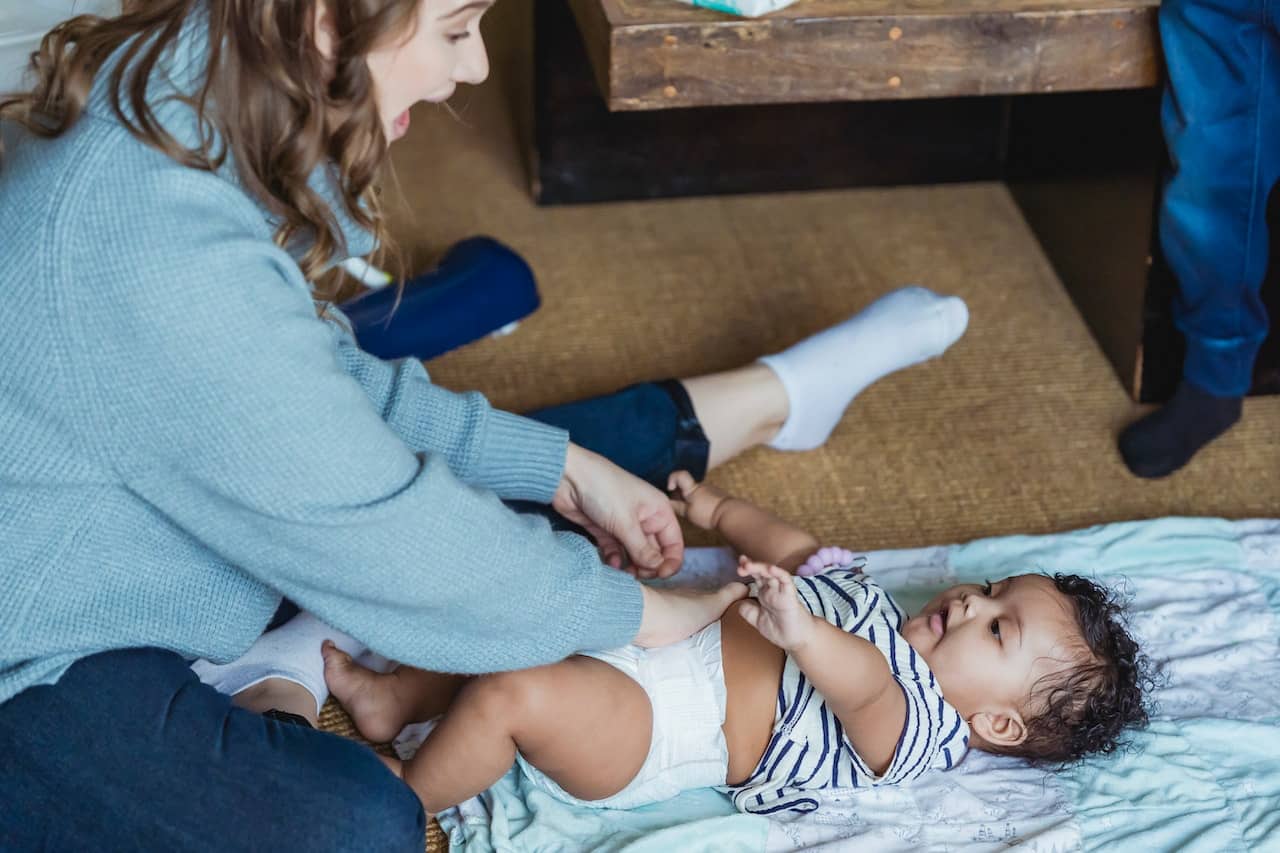

By Stewart Gold
Help! My Newborn Hates Diaper Changes
Fun fact: you (and/or your partner) will change over 2,000+ diapers during your baby’s first year.
Inhale. Exhale. Now take a deeeeeep breathe.
Those first 2,000 diapers will pass in no time mama and dada.
Diaper changing is a necessary and inevitable part of caring for a baby, but all new parents know it can be a frustrating and challenging task. During changing time you might find that your newborn baby:
- Wriggles
- Squirms
- Rolls
- Kicks; or even
- Pulls hair
There are several reasons why your newborn hates diaper changes. Understanding these reasons can help new parents make the process more manageable and less stressful for everyone involved.
What we’ll do is look at some signs your newborn hates diaper changes and offer an incredible solution to make diaper changing time more playful and less stressful for both you and your baby.
Signs Your Newborn Hates Diaper Changes
First, let’s look at the signs that your newborn hates diaper changes. Some are pretty obvious, but others may be more subtle and make take a little time (and attention) to recognize.
Babies may show several signs that they do not like diaper changing, such as:
- Crying or fussing: Crying is the most obvious sign that a baby is uncomfortable or upset. Crying or fussing during diaper changes may indicate that the baby is in pain or discomfort, or that they simply do not like the process.
- Refusing to lie still: Some babies may wiggle or squirm during diaper changes, making it almost impossible for parents to change their diaper.
- Arching the back: Arching the back is another sign that a baby is uncomfortable or upset. This can make it difficult to change the baby's diaper, and may indicate that they do not like the diaper changing process.
- Clenching the fists or legs: Clenching the fists or legs is a sign that a baby is tensing up and may be uncomfortable. This is another telltale sign that your newborn does not like diaper changing and can make the process stressful for parents.
- Turning the head away: A not so obvious sign is when your baby turns his or her head away. Turning the head away is a sign that a baby is trying to avoid something, such as the diaper change. Pay attention to this sign when changing your baby’s diaper.
- Refusing to make eye contact: Some babies may refuse to look at their parents or caregivers during diaper changes. This may be from a simple distraction, or it can be a sign your baby is uncomfortable with the diaper change process.
Some babies may be more tolerant of diaper changes than others, and some babies may simply be more fussy in general.
It is important to remember that it is not uncommon for babies to cry or fuss during diaper changes – it is an inevitable and natural part of the parenting process.
Does Your Newborn Hate Diaper Changes? The Dingle Dangle Really Works.
If you’ve come to find answers to your diaper changing problems … we have the perfect parent-designed solution.
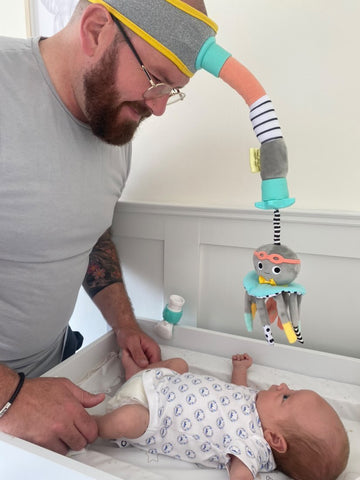
Developed by two diaper-weary fathers, the Dingle Dangle goes on your head and helps parents interact and provide a sensory bonding experience with your baby during diaper changing time.
The brightly colored, sensory octopus dangles in front of your baby – leaving your hands free to change his/her nappy fuss free.
With a soft, sensory chime, visually stimulating black and white dots, and a soft swaying motion, the Dingle Dangle was developed for the very purpose of helping new parents get through the frustration of diaper changing.
The best part? When you are done changing the diaper, the Dingle Dangle transforms into a portable mobile and sensory rattle – making it an incredible tool (or gift!) for any new parent.
Reasons Why Your Baby May Hate Diaper Changing Time

Now that we’ve looked at the signs your baby may hate diaper changing time, let’s look at the reasons why your baby may be uncomfortable or distressed:
Diaper Rash
One of the top reasons babies may dislike diaper changing is because it can be uncomfortable or even painful for them. Diaper rash, which is a common condition in babies, can cause itching, burning, and soreness in the diaper area.
When changing your baby’s diaper, always pay attention to check for any signs of diaper rash. If you notice a rash, you should always make sure to be extremely gentle with the area – wiping very gently on the affected area.
Finally, you should consult with your pediatrician and find a suitable a suitable diaper rash cream that will help soothe and protect the affected area.
This regimen should help quickly alleviate any pain or discomfort associated with diaper rash.
Routine Disruption
Another reason why babies may dislike diaper changing is because it can be disruptive to their routine and sleep schedule.
Babies thrive on consistency and routine, and diaper changing can disrupt their sleep or other activities. This can lead to babies becoming fussy or even crying when it is time for their diaper to be changed.
The truth is that sometimes it’s impossible to keep to a routine. Life doesn’t happen in a straight line, and you shouldn’t be hard on yourself if you need to change your routine to better fit your parenting lifestyle.
Positioning
Some babies may also dislike diaper changing because they are not used to being in certain positions. For example, some babies may not like lying on their back or being held in certain positions while their diapers are changed.

This can make the baby uncomfortable and lead to crying or fussiness.
There are a number of safe positions to change your baby’s diaper. Notice your baby’s reaction when in different locations or positions and take note of their general mood and behavior. There may be a certain spot where your baby feels more comfortable getting their diaper changed.
Communication
Some babies may dislike diaper changing because they are not yet able to understand or communicate their needs and wants. Maybe its diaper rash. Maybe they are in an uncomfortable position
Babies may feel frustrated or upset because they are not able to express their discomfort or dislike of the process. This can lead to crying or fussiness as a signal to the parent that the baby is unhappy.
How to Sooth Baby During Diaper Change

Despite these reasons above, there are several steps new parents can do to make diaper changing a more positive experience for both themselves and their babies.
- Be patient and understanding: Changing a diaper can be a difficult task for a baby, so it is important to be patient and understanding of their needs and feelings during the process.
- Make it a bonding experience: Talking to the baby or singing songs can help to distract them and make the process more enjoyable for both of you. It can also help to create a calm and positive atmosphere.
- Make it comfortable: It is so important to choose a clean, comfortable, and well-lit area for diaper changing to minimize discomfort for the baby. Using a warm wipe to clean the baby's bottom can be more comfortable and soothing than using a cold one and help prevent diaper rash. Small steps to make your baby comfortable will go a loooooong way.
- Use a soft surface: Use a changing pad or other soft surface when changing your newborn. This can help to provide a cushioned surface for the baby and minimize discomfort. Additionally, it is also important to clean the baby's skin thoroughly during diaper changes to minimize the risk of diaper rash.
- Keep the baby warm: Keeping the baby warm during the diaper change can help to prevent them from getting cold and uncomfortable. You can do this by using a warm changing pad, or by keeping the room warm.
- Use a diaper cream: Using a diaper cream that is formulated for babies can help to soothe and protect the baby's skin from diaper rash.
- Use a pacifier: A pacifier can be a useful tool for soothing a fussy baby during diaper changes. It can help to calm the baby and keep them occupied.
- Give the baby a toy: Providing a toy for the baby to hold or play with during the diaper change can help to distract them and make the process more enjoyable.
- Give the baby a massage: Gently massaging the baby's legs and arms during the diaper change can help to soothe and calm them.
- Be responsive: Finally, it is important to be responsive to the baby's needs and signals during diaper changes. If the baby is crying or fussing, it is important to take a break and try again later. Be flexible and willing to try different positions and techniques until you find what works best for your baby.
- Be prepared: Having all of the necessary supplies on hand, such as diapers, wipes, and diaper cream, can make the process quicker and less stressful.
Conclusion: Your Newborn Doesn’t Need to Hate Diaper Changes
2,000 diapers in the first year might seem like a lot, but believe us when we say that the time will pass in the blink of an eye.
One of the best pieces of advice we can give you is to simply be prepared and organized to respond to your babies needs when they arise.
It's important to recognize that every baby is different and what works for one baby may not work for yours.
Parents should be prepared to experiment with different methods to find what works best for their baby, and it's always good to consult with pediatrician if they have concerns about their baby's behavior or well-being.
Thanks so much for reading and please feel free to share your thoughts in the comments!
_______________
Want some more super useful baby information? Check out our articles on How To Calm an Overtired Baby, Best Crinkle Toys for Babies, and the best Next To Me Cribs.
